Uncover chilling behind-the-scenes tales of North America’s most iconic horror filming locations and learn why these spots still haunt fans today.
Immerse yourself in the world of haunted tourism, from iconic horror locations such as The Shining’s Stanley Hotel to lesser-known gems like The Fog’s Lighthouse. These iconic horror movie locations have compelling backstories and behind-the-scenes mysteries to uncover. Whether you want to satisfy a morbid curiosity or need a spine-chilling inspiration for the next big horror movie, we have compiled North America’s spookiest film locations for your next ghostly adventure.
Bringing your vision to life starts with the right location! Download Destination Film Guide now and discover filming destinations, tax incentives, and behind-the-scenes industry insights.
Why Horror Film Locations Captivate Audiences
Do you enjoy searching for meaning in the unknown? Are you hoping to happen upon a spirit? Or do you simply want to get in the mind of a movie director? There are many reasons why the horror genre attracts so many people, and haunted filming locations allow you to go a step further by visiting the on-screen world in real life.
A fair few real-life haunted sites have become so iconic that they are woven into the cultural fabric of the horror genre and beyond. You cannot simply book a room at The Stanley Hotel or tour Camp Crystal Lake without acknowledging the rich history found there. Movies have a way of transforming and amplifying buildings and places into pieces of pop culture notoriety. By visiting these iconic horror movie locations, you get a sense of the movie’s world and how it has shaped the real-life places.
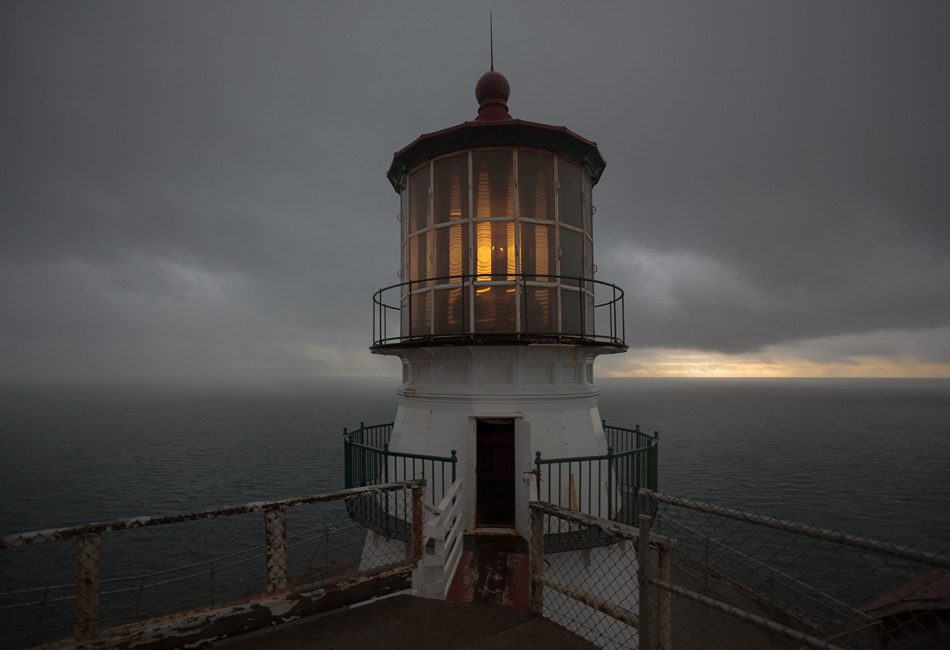
Point Reyes Lighthouse in California was the set for the film The Fog. Photo credit: John Tregoning/Flickr
Spotlight on Iconic Horror Filming Locations
From coast to coast, there are myriad haunted locations and iconic places that are shrouded in mystery, providing eerie environments perfect for filming your next horror movie.
Point Reyes Lighthouse (Point Reyes Station, CA)
With a steep cliff edge and seemingly endless walls of fog, the Point Reyes Lighthouse in Point Reyes Station, California, is constantly shrouded in an air of mystery, making it the perfect place for the coastal horror movie The Fog. To tap into the audience’s psyche, The Fog plays on the human trepidations of an overwhelming feeling of isolation and the fear of the unknown. The lighthouse was built in 1870 and captures this feeling all too well. Located amidst the fog of the Pacific Coast, you can visit the now decommissioned lighthouse for a taste of its eerie beauty.
The Stanley Hotel (Estes Park, CO)
In 1974, Stephen King stayed at Room 217 in the Stanley Hotel, and his experience there inspired The Shining. The hotel is regarded as one of the most haunted in America, with horror cinephiles and supernatural enthusiasts flocking here yearly. Although The Shining was not filmed here, King used the hotel in the 1997 TV show of the same name.
While there weren’t too many paranormal encounters behind the scenes, in an interview with Rue Morgue, Director Mick Garris recounted, “One thing that we did all experience was that we had taken over the hotel and only cast and crew were staying in it while we were shooting the film. So we’re shooting a scene in the lobby and we kept hearing clanging overhead…we went up and the source was the room directly above where the first assistant director was staying, of course he’s on set, and we repeatedly went up to that room and there was nobody there or anywhere else, but on set because we kind of owned the place so that happened. Eventually, it stopped, and nobody could ever figure out what it was.”
The Myers House (Hillsborough, NC)
This iconic horror movie location goes beyond just the landmark of The Myers House. The whole idyllic neighborhood is the real-life backdrop for the horror movie classic, Halloween. The house holds significant historical value outside of the Halloween franchise, being noted as one of South Pasadena’s oldest surviving residences. It was saved from demolition in 1987 and moved three blocks down the street. And as diehard horror fans might already know, the character of Michael Myers is inspired by Director John Carpenter’s real-life encounter with a little boy in a psychiatric ward.

The Myers House in North Carolina brings visitors right into movie magic. Photo credit: The Myers House NC Facebook
Texas Chainsaw House (Kingsland, TX)
Known as one of the most visceral horror movies, Texas Chainsaw Massacre transformed a classic Edwardian farmhouse in Texas into the slaughterhouse of a fictitious family of bloodthirsty cannibals. About two decades after the movie was filmed here, the house was moved 60 miles northwest and later renovated into a Texas Chainsaw Massacre-themed restaurant. While no hauntings occurred here during filming, the set still carried a tense, almost primal energy. The raw terror depicted onscreen was a product of Director Tobe Hooper’s intentional design, making cinematic history and inspiring horror films for years to come.
Camp Crystal Lake (Blairstown, NJ)
Sitting around a campfire telling ghost stories is about as classic as horror gets, making Camp Crystal Lake the perfect creepy filming destination for Friday the 13th. Horror movie sets are notorious for bizarre behind-the-scenes stories, and this set was certainly not lacking. Actor Harry Crosby went temporarily blind from fake blood in his eye while filming the scene where his character’s body is found impaled on a door. The movie also features a real on-screen death. The snake butchered in the cabin scene was real and alive before meeting its untimely demise.
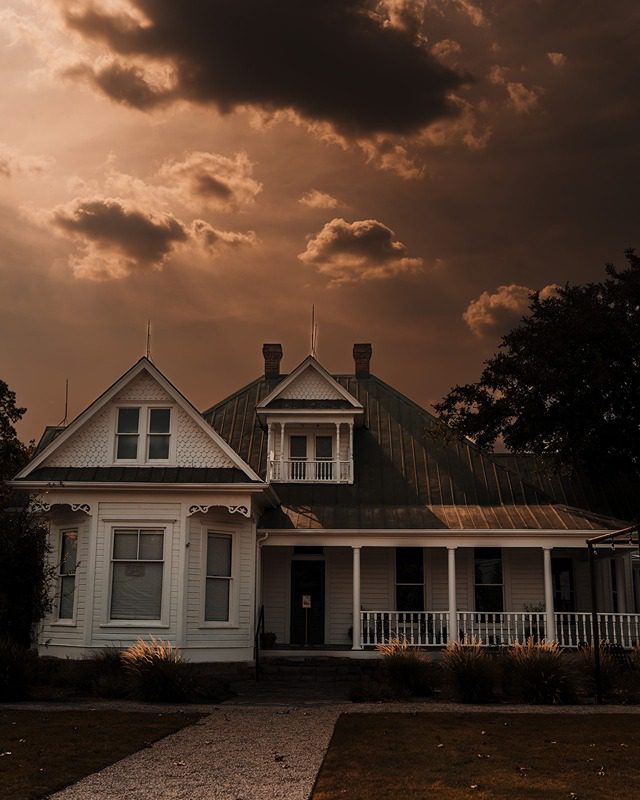
Texas Chainsaw Massacre house, now Hooper’s Restaurant, in Kingsland, TX. Photo credit: MJ Photography
Haunted History & Local Legends
While not haunted, the Texas Chainsaw Massacre set is known as one of the darker filming locations. Including the use of real skeletons, actors were directed not to bathe, and various on-set injuries occurred due to repetitive takes and the unsafe use of props.
In an interview with The Flashback Files, Director Tobe Hooper said: “All that physical stuff and fighting and everything, that was real. It looked real, it sounded real, so you knew it was real. That’s why the movie is such an assault on your nervous system. It has the sound of truth.”
Whether some believe that the set was cursed by human remains or otherwise, the true horror of this production was the tense, realistic terror created behind the scenes.
Built in 1907, the Stanley Hotel certainly does not lack in the ghost department, with spectral sightings, seemingly inexplicable occurrences, strange noises, and everything in between. It is said that the entire hotel has a story to tell, and some believe that it is a portal for the paranormal. Decades of unsettling history draw in skeptics and true believers alike, hoping for their own encounter with the supernatural. It’s no wonder it is regarded as one of North America’s spookiest film locations.
The filming of The Fog did not have any run-ins with a ghost while filming. However, lighthouses are often thought of as areas of high paranormal activity. And the Point Reyes Lighthouse, nestled in the foggiest part of California’s Pacific Coast, is not without its ghost stories. So many ships have crashed a shore that a San Francisco Chronicle article from 1887 called it “a land of wrecks.”
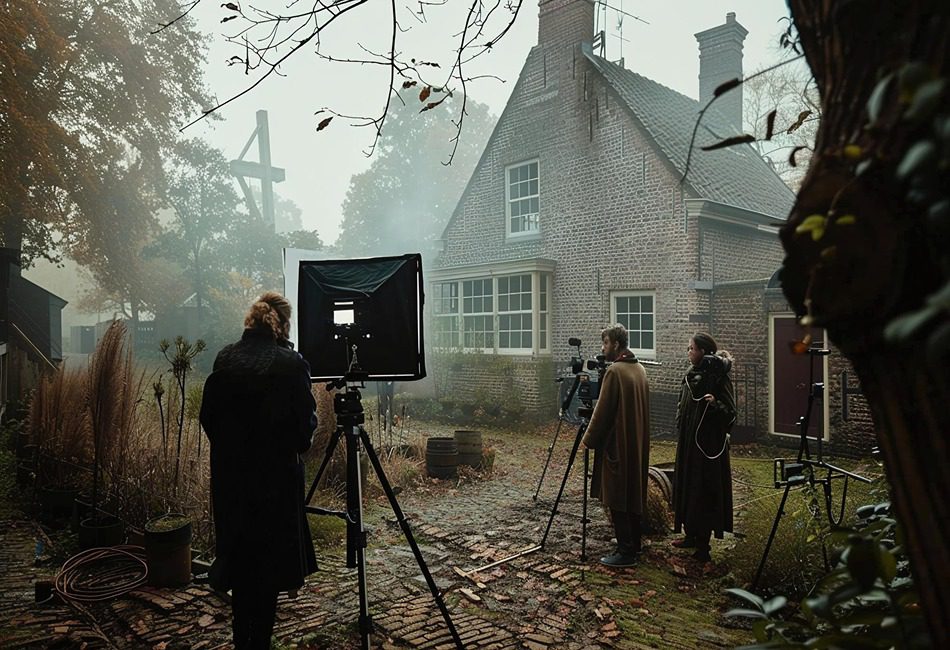
It’s all about the ambiance when filming a true horror scene. Photo credit: Freepik
The Appeal of On-Location Horror Filming
Some of the greatest horror films ever made are known for their real-world locations. Shooting on location can bring a movie to life, transforming an idyllic farmhouse into a slaughterhouse, utilizing the rolling fog at an eerie lighthouse, or simply gaining inspiration from real-life haunted sites. These locations made the movies truly iconic, and in turn, the film gave the locations horror symbol status in their own right.
Filming on a sound stage provides certain benefits, but nothing beats the atmosphere of shooting on location, especially for horror movies. Finding the perfect iconic location can make or break a film. It grounds the movie in a sense of reality for the audience and adds an immersive element for the actors, bringing these stories to life.
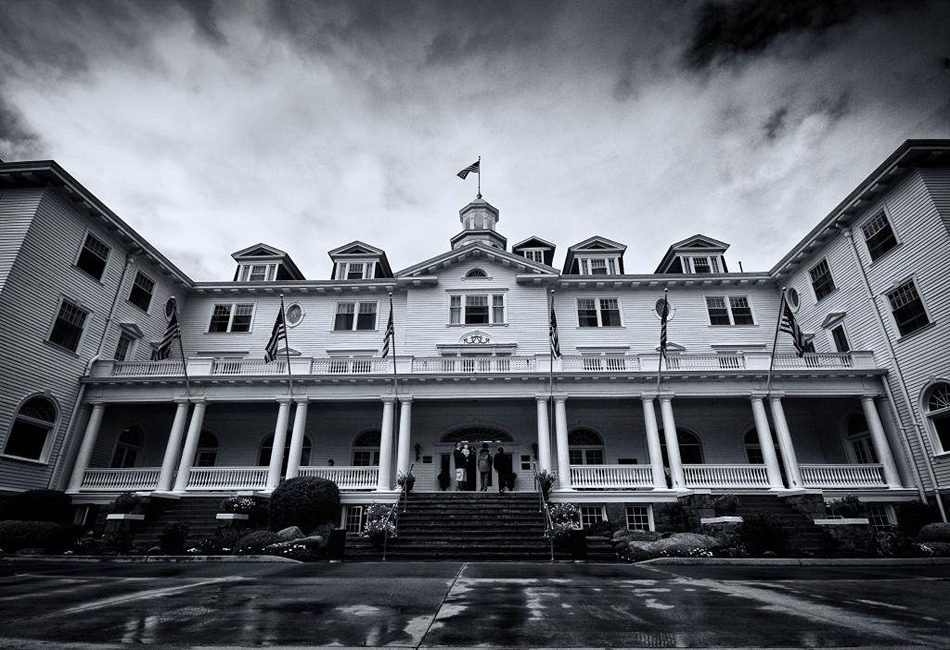
The Stanley Hotel was the spooky backdrop for Stephen King’s horror story, The Shining. Photo credit: The Stanley Hotel Facebook
Planning a Visit: Tips for Horror Enthusiasts
If you want to visit one of these creepy filming destinations, consider the following: accessibility, guided tours, restrictions, best times to visit, and private versus public property.
- The Stanley Hotel – As the seminal haunted filming location, there are a variety of guided tours to take you through the hotel’s history. The tours are wheelchair accessible, and restrictions include a minimum age requirement of eight, no pets, and no audio or video recordings. With year-round events, there is no bad time to visit. Tours are open to the public, meaning you don’t have to book a room to experience the hotel.
- The Myers House – This is a fully outdoor experience in a South Pasadena suburb. While there are no guided tours of the area, fans of this horror classic can walk the neighborhood to find iconic shooting locations from the movie. The Myers House is private property with no interior tours available, but it still provides a great photo backdrop. The best time to visit is undoubtedly in the fall, when you’ll get the whole Halloween experience.
- Camp Crystal Lake – A stunning outdoor retreat to visit; however, due to its terrain, there is limited handicapped accessibility. Camp No-Be-Bo-Sco, the real name of the camp, is a private property closed to visitors outside of its scheduled tours. If you want to visit, guided “Friday the 13th” tours are available in June, August and October. They have a variety of tours, including a walking tour, a movie screening, and overnight camping.
- Point Reyes Lighthouse – Unfortunately, the steep, winding staircase featured in the movie means the lighthouse is not wheelchair accessible. However, there is a visitors’ center and a scenic overlook for those with limited mobility. The lighthouse is a historic site, part of the national park service, and is free to visit. To truly immerse yourself in the fog of this location, visit the area in the early morning.
- Texas Chainsaw Massacre plantation — The eerie plantation home was used in the Texas Chainsaw Massacre 2003 and 2006 films. It is currently private property that can be seen from the road in Granger, Texas, off Highway 95 and County Road 336. If you want a spectacularly spooky photo op, this one fits the bill.
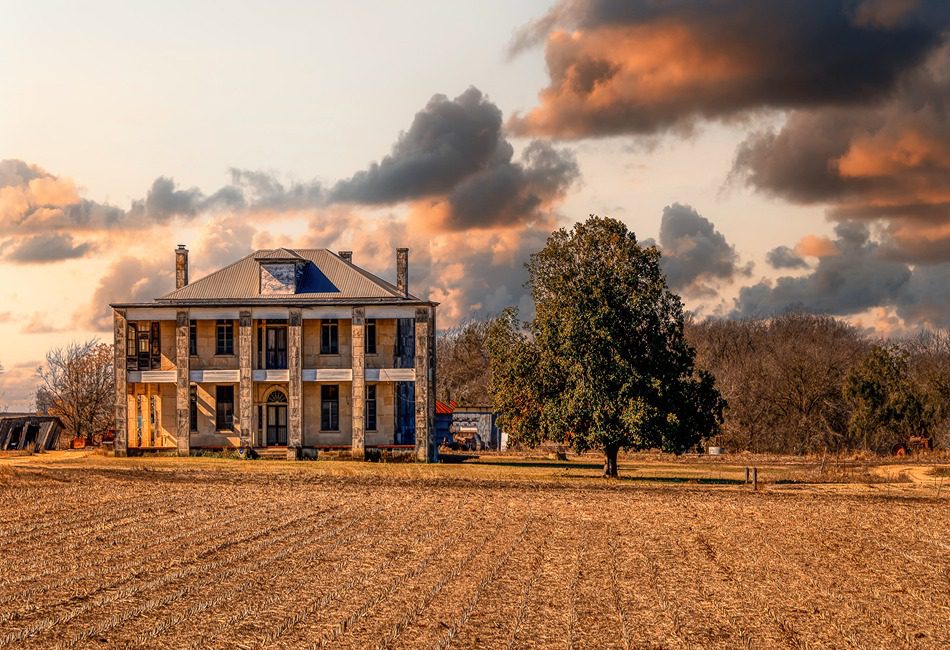
This Texas Chainsaw Massacre house was used in the 2003 and 2006 films and is now private property. Photo credit: G. Yancy/Flickr
Why Film in Spooky Locations
Horror tourism is more than just a sightseeing endeavor. Enter a director’s mind and experience the world of your favorite horror movies by visiting some of North America’s spookiest film locations. There is a real sense of intrigue and mystery behind the doors of every area. Get a shiver down your spine, look over your shoulder when something goes bump in the night, and experience the chilling ambience at some of the scariest movie locations in North America.
Stay in the know about top filming destinations! Subscribe to the Destination Film Guide newsletter and get expert insights, location highlights, and industry news straight to your inbox for free.
By Helene Martin, Contributing Writer

